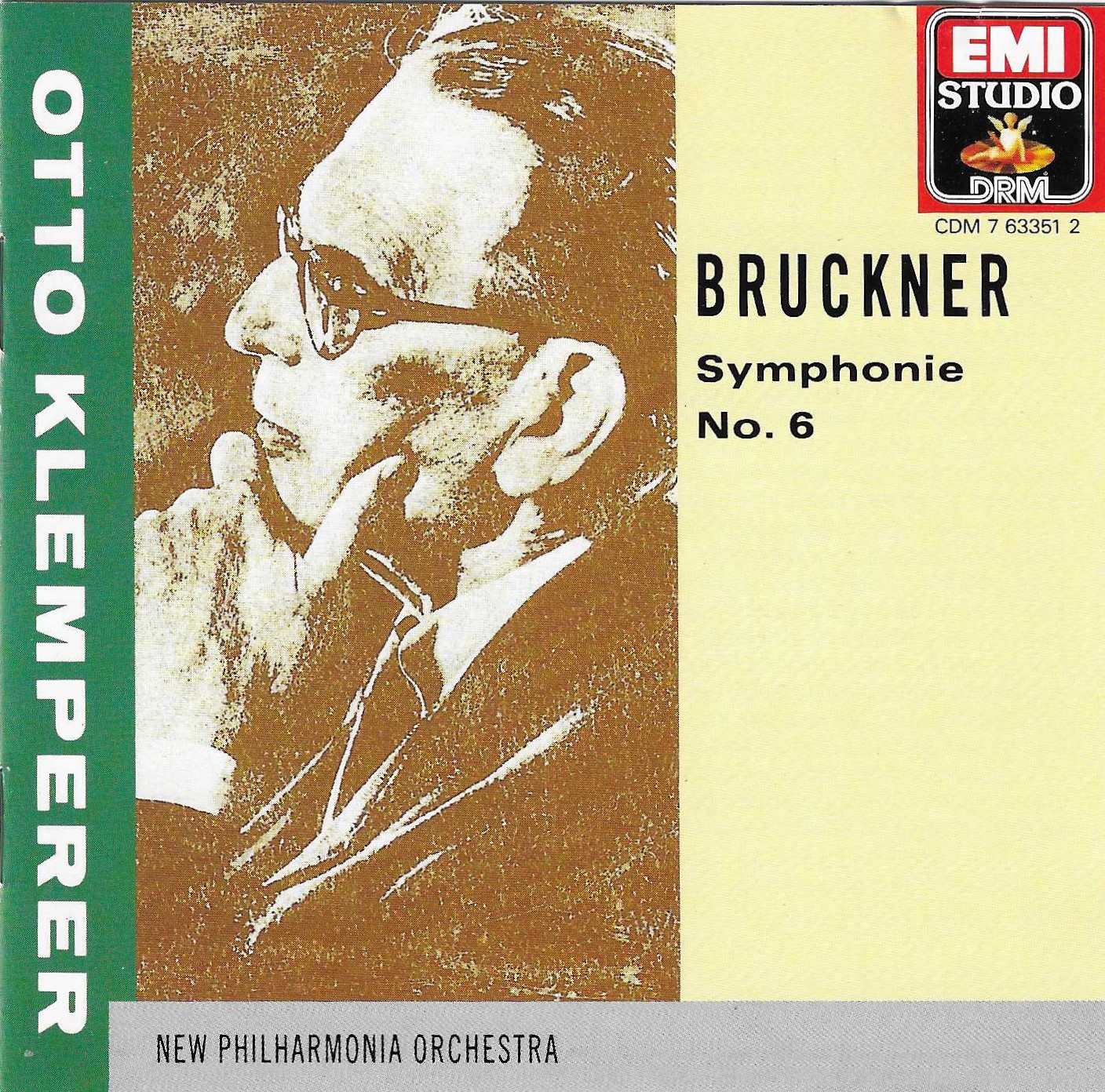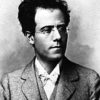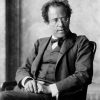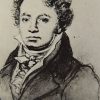This is a continuation of the previous blog on introduction of Bruckner’s Sixth Symphony. A few recordings I own are chosen here for comparison. More will be added as I acquire other recordings.
Listed below are the CDs and duration of each track (movement):
| Artists | Mvt1 | Mvt2 | Mvt3 | Mvt4 |
| Otto Klemperer | 17:02 | 14:42 | 9:23 | 13:48 |
| Günter Wand | 15:35 | 15:04 | 8:45 | 13:39 |
| Daniel Barenboim | 16:35 | 18:13 | 8:48 | 14:32 |
| Herbert Von Karajan | 15:16 | 18:58 | 7:52 | 15:13 |
| Georg Tintner | 17:02 | 18:46 | 8:55 | 14:44 |
| Sergiu Celibidache | 17:05 | 21:44 | 8:13 | 16:14 |
| Christoph Eschenbach | 16:13 | 20:08 | 8:11 | 15:27 |
| Bernard Haitink | 16:27 | 15:19 | 8:32 | 14:57 |
Playing time of each movement somewhat reflects the tempo chosen by the conductor. I say “somewhat” because within each movement, tempo markings by the composer may vary based on the expressive ideas of the work, and may well be interpreted differently by each conductor. So just because two tracks of a movement have same or similar duration, it does not mean they will sound the same, even just by tempo.
Otto Klemperer, New Philharmonia Orchestra (1965, EMI)
 This used to be considered the “reference” recording of Bruckner Six, even today it is still revered by many. I’ll be honest here, I have listened to it many times, and it just doesn’t register in me. There are mainly two issues. First is obviously the tempi. Listen to the very opening here:
This used to be considered the “reference” recording of Bruckner Six, even today it is still revered by many. I’ll be honest here, I have listened to it many times, and it just doesn’t register in me. There are mainly two issues. First is obviously the tempi. Listen to the very opening here:
It just sounds too slow as if the music is trudging through a swamp.
The movement is titled Majestoso, it should sound majestic, so it needs to carry certain weight and a sense of constant forward momentum. Bruckner uses the triplets on the string to accompany the main theme, this rhythmic device is purposefully here to do just that, to move forward. Playing it at such slow tempo is just not convincing to me. Bruckner marked the beginning of second theme (letter B) Bedeutend langsamer (significantly slower), which cannot be more clearer. We don’t really get such tempo contrast here.
When it comes to the Adajio, Klemperer does the total opposite by playing it way too fast. David Hurwitz said Klemperer wss famous for playing fast movements slow and slow movements fast, and characterized the playing here as “unsentimental flowing beautiful” performance.[1] Indeed this movement is the fastest of all here on the list. So is “unsentimental” how the composer would like the movement to sound like? I seriously doubt it.
The second issue is the timbre, particularly with the oboe. It has this sharper tone color that sounds brighter and high pitched, not like the oboe we hear often that sound softer and richer. Maybe it’s just how the oboes sounded in the 60’s, but I suspect it’s more because of, as Hurwitz mentioned, Klemperer’s emphasis on woodwind sonority. It’s indeed a “feature” clearly demonstrated here, particularly in the first movement. Listen here how the oboe just “cut” through the texture during the second theme:
Throughout the first movement, you’ll often hear that piercing high oboe tone stands out oddly, sounding foreign and even disruptive. But, near the end, where the oboe starts that fantastic five 4-bar groups of progression of the main theme over a series of keys (beginning with an inversion first), the dynamics between the oboe and the horn are just off. The first two phrases (two 4-bar groups) should be heard mainly on the oboe, with the horn supporting underneath and then gradually emerges out, and taking over by the third phrase (letter X). This gradual shifting of texture is missing, even sounding reversed, with the horn dominating the line from the beginning:
Günter Wand, Kölner Rundfunk-Sinfonieorchester (1976, SONY)
 This was from Wand’s early cycle with WDR (then Cologne Radio Symphony), he made another cycle later on with WDR. This performance lasts just over 53 minutes, it’s the fastest on the list. Overall it’s lively, energetic and refreshing, yet never looses Wand’s precision and extremely clear texture. The first movement is only 15 minutes long, but you won’t feel it’s rushing; one of the reasons is that the prevalent triplet rhythm through out the movement is always clearly rendered, especially on the timpani, which often gets buried. If the speedy tempo is still manageable for the first movement, the same is questionable for the Adagio. For example during recapitulation, when the second theme comes in, it can definitely breath a tad slower, even just to be in line with the overall tempo of the movement. Wand’s speedy tempo is only second to Klemperer’s, but it’s smoother and more balanced in timbre. As for the Finale, Wand takes us all the way through at the fastest pace compared to others here, without any signs of slower down or any sense of hesitation through the climax at the end till the last chord.
This was from Wand’s early cycle with WDR (then Cologne Radio Symphony), he made another cycle later on with WDR. This performance lasts just over 53 minutes, it’s the fastest on the list. Overall it’s lively, energetic and refreshing, yet never looses Wand’s precision and extremely clear texture. The first movement is only 15 minutes long, but you won’t feel it’s rushing; one of the reasons is that the prevalent triplet rhythm through out the movement is always clearly rendered, especially on the timpani, which often gets buried. If the speedy tempo is still manageable for the first movement, the same is questionable for the Adagio. For example during recapitulation, when the second theme comes in, it can definitely breath a tad slower, even just to be in line with the overall tempo of the movement. Wand’s speedy tempo is only second to Klemperer’s, but it’s smoother and more balanced in timbre. As for the Finale, Wand takes us all the way through at the fastest pace compared to others here, without any signs of slower down or any sense of hesitation through the climax at the end till the last chord.
Daniel Barenboim, Chicago Symphony Orchestra (1979, DG)
 This comes from the earliest Bruckner cycle of Barenboim’s, recorded with Chicago Symphony. It truly is a magnificent performance. The tempo relationship among the four movements is just right and perfectly balanced. If the first movement is to be majestic, this feels the right pace it should have, with the main theme’s triplet rhythm appropriately fast but not rushing, with a contrasting slower second theme. And to fully demonstrate the emotional depths of the Adagio, it has to be much slower. As Simpson noted, “it is often played too fast; it will both withstand and reward the slowest playing that artistry, technique, and courage can afford”. There are two minor issues. First, it has the same problem as Klemperer’s on the first movement coda with oboe and horn duet, the oboe is too light and overshadowed by the horn for the first two 4-bar phrases. Second, in the Finale, it seems the brass came in one beat earlier on bar 56 (circled in red below):
This comes from the earliest Bruckner cycle of Barenboim’s, recorded with Chicago Symphony. It truly is a magnificent performance. The tempo relationship among the four movements is just right and perfectly balanced. If the first movement is to be majestic, this feels the right pace it should have, with the main theme’s triplet rhythm appropriately fast but not rushing, with a contrasting slower second theme. And to fully demonstrate the emotional depths of the Adagio, it has to be much slower. As Simpson noted, “it is often played too fast; it will both withstand and reward the slowest playing that artistry, technique, and courage can afford”. There are two minor issues. First, it has the same problem as Klemperer’s on the first movement coda with oboe and horn duet, the oboe is too light and overshadowed by the horn for the first two 4-bar phrases. Second, in the Finale, it seems the brass came in one beat earlier on bar 56 (circled in red below):

Herbert Von Karajan, Berlin Philharmonic (1979, DG)
 This is from the DG box set that has all 9 Bruckner symphonies recorded by Karajan and BPO between 1975 and 1981. The sound is superb, yet compared to others Karajan’s reading of the Sixth feels somewhat light-footed to me, especially the first movement. I wish the second theme comes in with more contrast in tempo to the main theme. At the end, I feel the speedy tempo (fastest on this list) makes it sound hastily quick, the texture turns a bit muddy, with the string accompaniments and the triplet rhythm on the tympani (corner stone of the entire movement), almost buried by the brass. Take a listen:
This is from the DG box set that has all 9 Bruckner symphonies recorded by Karajan and BPO between 1975 and 1981. The sound is superb, yet compared to others Karajan’s reading of the Sixth feels somewhat light-footed to me, especially the first movement. I wish the second theme comes in with more contrast in tempo to the main theme. At the end, I feel the speedy tempo (fastest on this list) makes it sound hastily quick, the texture turns a bit muddy, with the string accompaniments and the triplet rhythm on the tympani (corner stone of the entire movement), almost buried by the brass. Take a listen:
Now let’s hear the same passage from Wand:
I pick Wand to be “fair” in terms of tempo being extremely close to Karajan’s (instead of picking, say, Celi). The point is, although running time (absolute speed) is almost the same for both players, Wand’s doesn’t sound rushing at all, because Wand’s phrasing and contrast are more attentive and accurate. So here it’s not much about the actual speed of the playing, but more about the details of the texture that the conductor emphasizes to serve the intended character of the movement. That triplet rhythm is essential at the ending climax to bring out the majestic grandeur of the movement, and being able to do that is more important than the speed itself (though a bit slower tempo would definitely help, not only serving the style better but also help bringing out the texture details).
One more thing, Bruckner marks the ending 3 bars molto ritard., we hear that clearly in Wand’s interpretation (which, let’s be honest here, is also more satisfying!), but not in Karajan’s.
Sergiu Celibidache, Munic Philharmonic (1991, SONY)
 Without exception of his typical style, Celibidache’s rendering of the piece is much slower, the slowest here actually on the list. However, if you listen to it a few times and pay attention, you’d start to appreciate the rich sound and all the details it brings out of the piece, and you would not feel it that “slower”. The climax of the first movement is both clear in texture and powerful. The adagio is over 20 minutes long, but for people who can tolerate such slow speed for its details, it’s a great way to enjoy it. Listen to the recapitulation of the main theme, the opening cello line here is now in triplets, yet we almost never hear that so clearly in other recordings:
Without exception of his typical style, Celibidache’s rendering of the piece is much slower, the slowest here actually on the list. However, if you listen to it a few times and pay attention, you’d start to appreciate the rich sound and all the details it brings out of the piece, and you would not feel it that “slower”. The climax of the first movement is both clear in texture and powerful. The adagio is over 20 minutes long, but for people who can tolerate such slow speed for its details, it’s a great way to enjoy it. Listen to the recapitulation of the main theme, the opening cello line here is now in triplets, yet we almost never hear that so clearly in other recordings:
Georg Tintner, New Zealand Symphony Orchestra (1995, NAXOS)
 So speaking of ending of the first movement, Tintner’s account goes the opposite of Karajan but a bit too far, literally dragging it down to the point almost stalling the final climax. Take a listen:
So speaking of ending of the first movement, Tintner’s account goes the opposite of Karajan but a bit too far, literally dragging it down to the point almost stalling the final climax. Take a listen:
Other than that, overall a very decent and passionate performance. At times the tympani sounds a bit muffled, I wish it’d be more forceful and clear on the rhythm (which is particularly important to this piece). Tempi are on slower side, but definitely not static or sounding rigid; the adagio has great string sound, sensible and perfectly paced.
Christoph Eschenbach, London Philharmonic Orchestra (2010, LPO)
 I bought this recording after seeing the YouTube video of a live performance he conducted with Frankfurt Radio Symphony Orchestra in Germany, which made quite an impression on me. To me Eschenbach’s interpretation combines the clarity of texture, rich layers of instrument sonority and the expressive power all into a magnificent performance. The code of the first movement has beautifully balanced and gracefully transitioned sounds from the oboe, to brass, then to the culmination of final climax. Unlike some other conductors who rushes to the end (like Karajan), Eschenbach gradually but firmly builds up the momentum, but never looses attention to the overall texture, the broad brass lines near the final recap of the main theme never overwhelms the string accompaniments. The Adagio is slower than the others but extremely attentive, you can hear that from beautiful and sensual oboe lament, to the gradual build-up of climax with perfectly layered sounds among woodwinds, strings and brass (particularly the amazing horns). This disc would easily sit on my probably top tree recordings of this survey.
I bought this recording after seeing the YouTube video of a live performance he conducted with Frankfurt Radio Symphony Orchestra in Germany, which made quite an impression on me. To me Eschenbach’s interpretation combines the clarity of texture, rich layers of instrument sonority and the expressive power all into a magnificent performance. The code of the first movement has beautifully balanced and gracefully transitioned sounds from the oboe, to brass, then to the culmination of final climax. Unlike some other conductors who rushes to the end (like Karajan), Eschenbach gradually but firmly builds up the momentum, but never looses attention to the overall texture, the broad brass lines near the final recap of the main theme never overwhelms the string accompaniments. The Adagio is slower than the others but extremely attentive, you can hear that from beautiful and sensual oboe lament, to the gradual build-up of climax with perfectly layered sounds among woodwinds, strings and brass (particularly the amazing horns). This disc would easily sit on my probably top tree recordings of this survey.
Bernard Haitink, Symphonieorchester des Bayerischen Rundfunks (2017, BR-Klassik)
 Haitink’s reading of the Sixth sounds a bit light footed, probably because his relatively faster tempo, particularly on the Adagio. Listening to all these recordings only reinforces Simpson’s point about the Adagio should be played with a slower pace. Tempo aside, the disc is not bad at all in its shape and sound, texture is rich with sufficient clarity. Occasionally I hear a bit unusual touch of dynamics, such as the second 4-bar phrase of the oboe solo at the start of the first movement coda, a sudden softening of the dynamics sounds a bit odd to me.
Haitink’s reading of the Sixth sounds a bit light footed, probably because his relatively faster tempo, particularly on the Adagio. Listening to all these recordings only reinforces Simpson’s point about the Adagio should be played with a slower pace. Tempo aside, the disc is not bad at all in its shape and sound, texture is rich with sufficient clarity. Occasionally I hear a bit unusual touch of dynamics, such as the second 4-bar phrase of the oboe solo at the start of the first movement coda, a sudden softening of the dynamics sounds a bit odd to me.
[1] David Hurwitz. Repertoire: The BEST Bruckner Sixth Symphony. https://www.youtube.com/watch?v=4UsYoFRApHU
[2] Simpson, Robert. The Essence of Bruckner. London: Victor Gollancz Ltd, 1992. p. 157















